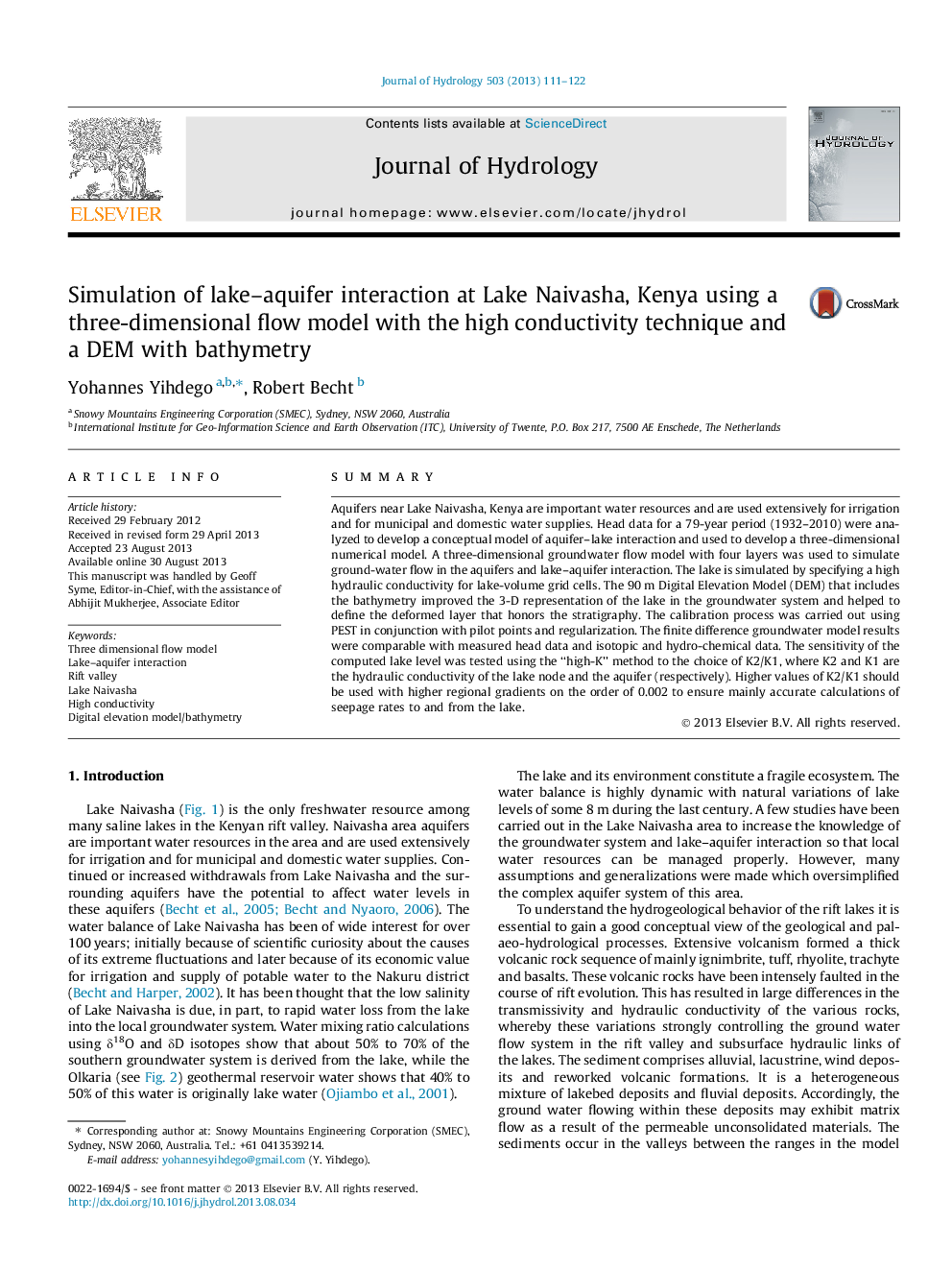| کد مقاله | کد نشریه | سال انتشار | مقاله انگلیسی | نسخه تمام متن |
|---|---|---|---|---|
| 4576190 | 1629945 | 2013 | 12 صفحه PDF | دانلود رایگان |

• A 3D ground water flow model is used to simulate the lake aquifer interaction.
• A DEM with 30 m resolution was used to improve the 3-D representation of the lake.
• The lake is considered as a high hydraulic conductivity in the modeling framework.
• The simplicity of the model approach can be implemented with existing preprocessor.
• The calibration process was carried out using pilot points and regularization.
SummaryAquifers near Lake Naivasha, Kenya are important water resources and are used extensively for irrigation and for municipal and domestic water supplies. Head data for a 79-year period (1932–2010) were analyzed to develop a conceptual model of aquifer–lake interaction and used to develop a three-dimensional numerical model. A three-dimensional groundwater flow model with four layers was used to simulate ground-water flow in the aquifers and lake–aquifer interaction. The lake is simulated by specifying a high hydraulic conductivity for lake-volume grid cells. The 90 m Digital Elevation Model (DEM) that includes the bathymetry improved the 3-D representation of the lake in the groundwater system and helped to define the deformed layer that honors the stratigraphy. The calibration process was carried out using PEST in conjunction with pilot points and regularization. The finite difference groundwater model results were comparable with measured head data and isotopic and hydro-chemical data. The sensitivity of the computed lake level was tested using the “high-K” method to the choice of K2/K1, where K2 and K1 are the hydraulic conductivity of the lake node and the aquifer (respectively). Higher values of K2/K1 should be used with higher regional gradients on the order of 0.002 to ensure mainly accurate calculations of seepage rates to and from the lake.
Journal: Journal of Hydrology - Volume 503, 30 October 2013, Pages 111–122